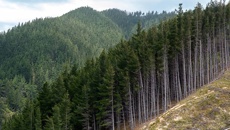On the night before the eruption, scientists observed rigorous steaming, along with new deposits around the vent.
But that – along with the absence of any tell-tale signs like lightning in volcanic clouds above the island - still didn't suggest there had been an eruption, which would have lifted the alert level to 3.
"The volcano didn't erupt on Sunday evening – and as it didn't erupt, we didn't raise the alert level," Scott told the Herald today.
On the morning of the eruption, the alert level remained at 2 – a level that, in an interview with TVNZ, White Island Tours chairman Paul Quinn said had been deemed safe by the company to travel to the island.
The company – which happened to have won a national health and safety award last year – also stated having risk and safety procedures that it drew on before embarking.
Scott said GeoNet's alert levels were published so those ranging from Civil Defence and aviation agencies to tour operators and tourists themselves could gauge the risk.
There wasn't any arrangement where GeoNet directly briefed tour companies to give them the all clear.
"We don't have any one-on-one phone calls an hour before they go, or anything like that."
When the eruption happened, the alert level immediately shot to 4; it now sits at three.
While steam-driven eruptions could occur without warning at the volcano at any alert level, Scott said the warning system was still valuable.
"We'd changed it to level 2, saying, hey, there is a high chance of an eruption at the volcano," he said.
"From a scientific perspective, it's really important that we are able to give society that heads up.
"What we can't deliver, is that 2pm-on-Tuesday societal expectation, but I'd argue very strongly that having an alert level system is important to informing everybody and giving them an opportunity to think about it."
Scott added that White Island had been in an eruptive episode since 2011 – and alert levels had changed frequently over that period.
He was aware of some people making specific claims on social media about what they saw as warning signs that were missed – but reiterated that the warning level had been at its highest level, short of an eruption.
In any case, he argued now wasn't the time for those discussions.
"Whether we should be rebutting people's comments or not … it's totally inappropriate to be in that space at the moment," he said.
"We've still got eight people to recover off the island."
Should 2016 event have warned operators?
Meanwhile, some have questioned why tours on the island were allowed after an earlier eruption generated a blast so violent it travelled straight across its main floor, damaging and burying markers and covering up tourist trails.
The steam-driven blow, which happened late on April 27, 2016, when the island was deserted, also carved out a new crater, caused landslides, excavated some of the lake and left the crater floor covered in green-tinged ash.
A study published this year found that around 95 per cent of the tourist path had been affected by the pyroclastic surge, travelling at an estimated 11 metres per second.
"This study provides a quantitative assessment of the eruption and the hazards that these events pose, with specific reference to tourists on White Island," the study authors wrote.
"Therefore, this work can be directly inputted into useful risk models elsewhere where phreatic [steam-driven] eruptions are common."
Scott couldn't say whether the paper had been directly provided to tour operators.
"But on the other side of the coin, the operators were 110 per cent aware of the impacts, because when they went out on their next trip, their walking track was no longer available," he said.
"They had to change the route and walk a new track because the previous one was buried, so they were 110 per cent aware of the impact of eruptions, and would have seen the smashed solar panels and sheared survey pegs."
/arc-anglerfish-syd-prod-nzme.s3.amazonaws.com/public/SFLQDRO3SJAZNK4MMCCOVFGS5Q.jpg)
Other scientists have called tourism on White Island as "a disaster waiting to happen".
Emeritus Professor Ray Cas, of Australia's Monash University, said he'd visited the island twice and always thought it was too dangerous to allow daily tour groups onto.
Another overseas scientist, Dr Jessica Johnson of the University of East Anglia in the UK, said the eruption was "unfortunate but not completely unexpected".
"Levels of activity at White Island/Whakaari have been relatively high since September, and even more elevated over the last couple of weeks, with increased numbers of small earthquakes and more volcanic gas detected than usual," she said.
"As a consequence, the volcanic alert level was raised. Similar eruptions have happened over the last 100 years or so."
She noted that even though the alert level was raised, it was still very difficult to forecast exactly what would happen at volcanoes.
Timeline
DECEMBER 9:
White Island erupts, killing 13 people and injuring more than 30.
DECEMBER 3: GeoNet reports moderate volcanic unrest at the volcano with "substantial gas, steam and mud bursts" observed at the vent located at the back of the crater lake. Amid other heightened indicators, the alert level stays at 2.
NOVEMBER 25: A moderate level of unrest continues at the island, but there are no new changes. The alert level is kept at 2.
NOVEMBER 18: Unrest continues, with some increases in activity. GeoNet reports that hazards on the island are "now greater than during the past few weeks" and the alert level is raised from 1 to 2.
OCTOBER 30: There are some signs of increased activity, but GeoNet adds there's uncertainty about what these mean. The alert level stays at 1.
SEPTEMBER 26: Small, muddy, geyser-like explosions are observed in the active crater, due to a rising crater lake drowning the active vents. GeoNet states this geysering poses no risk to visitors and the alert level remains at 1.

/arc-anglerfish-syd-prod-nzme.s3.amazonaws.com/public/NXVWV46CKZGWPKVHQGSK7T2OWQ.jpg)








